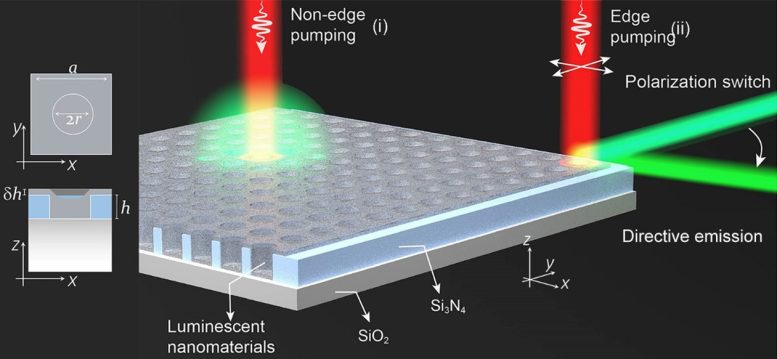
Researchers at the National University of Singapore have introduced “supercritical coupling,” a groundbreaking concept that greatly improves photon upconversion efficiency. By leveraging the phenomena of “bound states in the continuum” (BICs), the team has surpassed traditional limitations, enabling light to be trapped indefinitely in open structures. This advancement, which showcases an eight-order of magnitude increase in upconversion luminescence, has profound implications for the control of light emission at the nanoscale, potentially impacting quantum photonics and other areas of photonic devices. Published in Nature, this work signals a paradigm shift in nanophotonics and opens new avenues for research.
Scientists at the National University of Singapore (NUS) have introduced a groundbreaking concept known as “supercritical coupling,” which significantly boosts the efficiency of
Novel Approaches and Experimental Validation
By manipulating the interaction between dark and bright modes within these structures, similar to the classical analogue of electromagnetically induced transparency, the researchers not only enhanced the local optical field but also precisely controlled the direction of light emission.
Their findings have been published in the journal Nature.

Figure illustrates the principle of “supercritical coupling” and directive upconversion emission through supercritical edge BIC coupling. It shows the layout of the photonic-crystal nanoslab with unit cell geometry and demonstrates collimated upconversion achieved through supercritical coupling tuned at the edge. Credit: Nature
The experimental validation of supercritical coupling marks a significant leap forward, demonstrating an eight-order of magnitude increase in upconversion luminescence. The experimental setup involves a photonic-crystal nanoslab covered with upconversion nanoparticles. These nanoparticles serve as microscale sources and lasers. The unique properties of BICs, characterized by negligible light dispersion and microscale dimensions of the light spots, were harnessed to achieve precision in focusing and directional control of the emitted light. This opens up new avenues for controlling the state of the light.
Prof Liu said, “This breakthrough is not only a fundamental discovery, but represents a paradigm shift in the field of nanophotonics, altering our understanding of light manipulation at the SciTechDaily